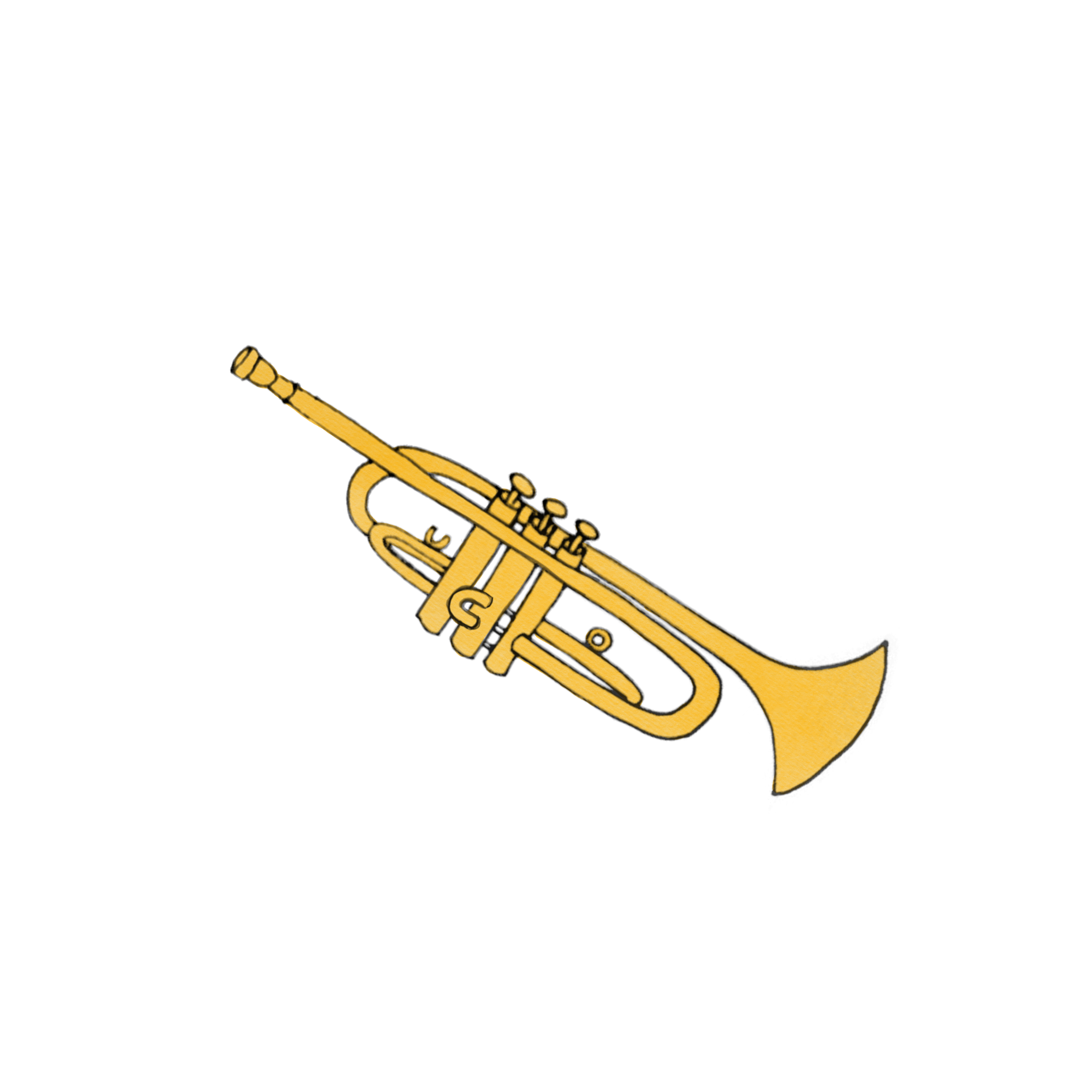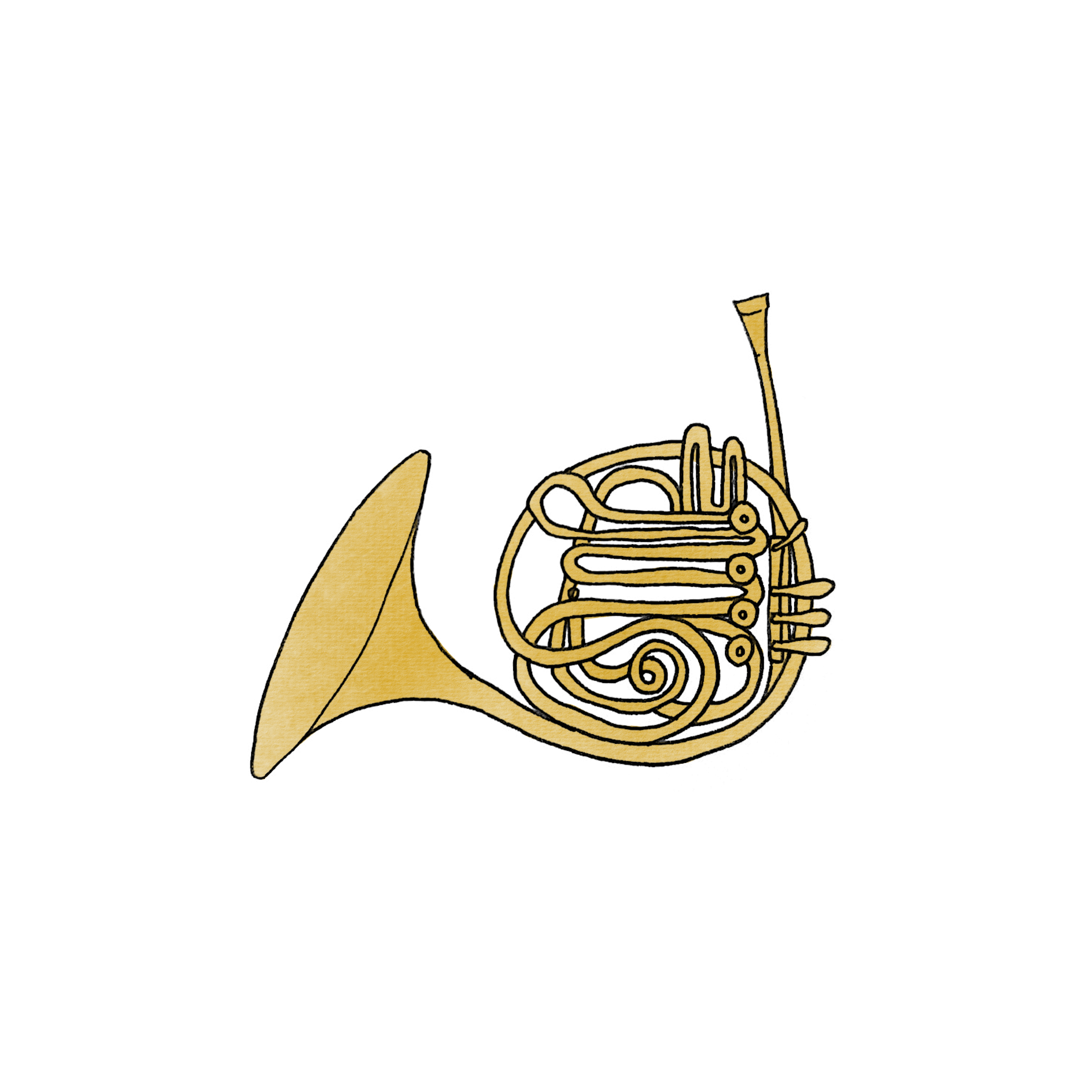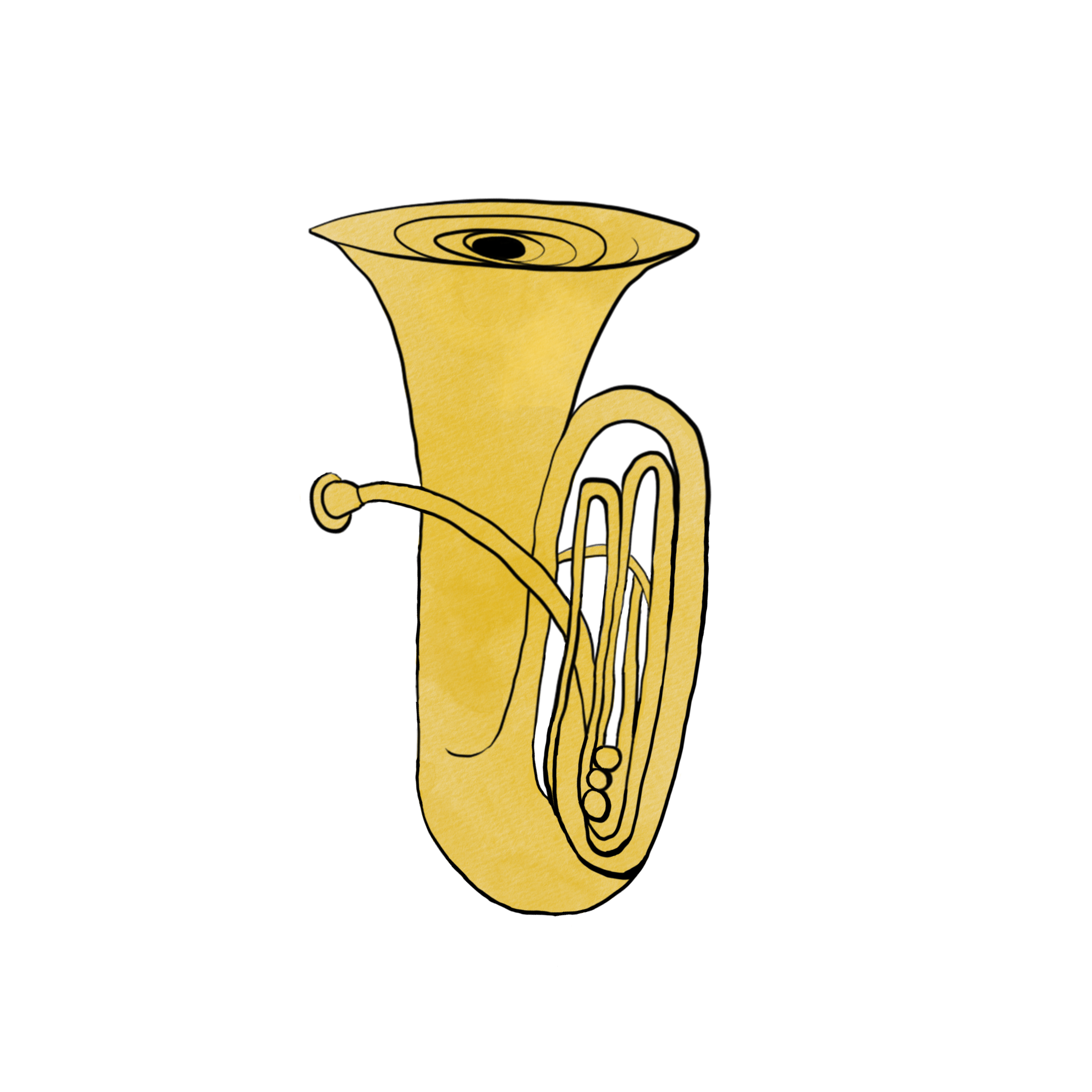Brass instruments

Trombone, horn, trumpet, baritone horn, and tuba are categorized as brass instruments. There's a vast array of ensemble pieces available for brass players. Quintets, quartets, and trios are the most common, but larger ensembles, such as marching bands and brass choirs, also play a significant part. It's crucial for students learning a brass instrument to have opportunities to explore this music, ideally through regular participation in ensemble groups.
Trumpet
- Students can start learning the trumpet when they are physically able to play the instrument and their adult front teeth are in place. Usually around 8-10 years old.
- Trumpets come in various sizes and keys, but the most common is the B♭ trumpet. It is the fundamental instrument in trumpet education and dominates in marching bands and rhythmic music. Smaller trumpets, like the D, E♭, and B♭ or A piccolo trumpets, are mainly used for playing older trumpet concertos and contemporary music. In symphony orchestras, the C trumpet is most common, but B♭ trumpets and smaller ones are also used.
- The cornet and flugelhorn have been used since the early 19th century. The cornet being particularly popular around the year 1900, leading to many virtuoso solo pieces written for it. Today, the flugelhorn is commonly used as a secondary instrument for trumpet players in big bands and other jazz bands.

Trombone
- Trombone education can begin once students are physically capable of handling the instrument, usually around 9-10 years old. Trombones come in various sizes and types. The curriculum typically using the tenor trombone as the primary instrument. It's recommended that young beginners use lighter instruments with narrower slides (e.g., medium or small bore) and appropriately sized mouthpieces.
- There is a wealth of music for trombone, both solo and ensemble pieces. A majority of instruction books are aimed at tenor trombones, though there are specific books for alto and bass trombones. The trombone is used in almost all music genres: classical, wind, jazz, pop, and contemporary music.

Baritone horn
- Baritone horns come in different sizes and have various names in different countries, such as tenor horn, baritone, euphonium, and even tenor tuba. In conversation, it's often simply called a baritone. In Iceland, it has been referred to as a barítonhorn or tenórhorn.
- Students can start learning the baritone horn when they are physically able to play the instrument. Usually around 8-9 years old. These horns are available with either three or four valves. Students most commonly start on an instrument with three valves and then move to a more advanced one. The fourth valve helps with playing lower notes and improves intonation accuracy.
- There's relatively little music composed specifically for the baritone horn. Students therefore often use music written for other instruments, such as the trumpet, trombone, cello, bassoon, or tuba. The baritone horn is most prominent in various types of wind music but is occasionally used in symphonic works too.

Horn
Horn education can begin once students are physically developed enough to hold the instrument, usually around 12 years old. However, instruments specially designed for younger players are available. It's common for students to initially learn on another smaller brass instrument, such as the trumpet, cornet, or alto horn.
There are three types of starter instruments: the single F horn, the single B♭ horn, and the double F/B♭ horn. Each has its advantages and disadvantages. The double horn, with its thumb valve, combines the F and B♭ horns into one instrument, allowing students to experience the benefits of both. A medium bell double horn is often the best choice for students at most learning stages and is essential for advanced education. It's important to note that double horns are more expensive and heavier than single horns.

Tuba
The tuba is a large and imposing instrument. It is thus preferable for students to start their education on a smaller brass instrument. However, smaller tubas specifically designed for young learners have been developed in recent years. Tuba education can begin once students are physically capable of playing the instrument, usually between 10-12 years old.
Because of their cost, music schools and bands often lend tubas to students. Tubas are available in various sizes and keys. The B♭ and E♭ tubas are the most common and the curriculum is designed with such instruments in mind.
The tuba is featured in all music styles but primarily used in marching bands, symphony orchestras, and chamber groups. While not typically a solo instrument, there is a significant repertoire of solo pieces for the tuba, many of which are arrangements from other instruments, such as the cello and trumpet.
